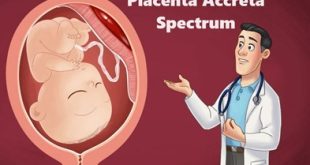Definition Stomach ulcer, which are also known as gastric ulcers, are painful sores in the stomach lining. Stomach ulcers are a type of peptic ulcer disease. Peptic ulcers are any ulcers that affect both the stomach and small intestines. Stomach ulcers occur when the thick layer of mucus that …
Read More »Gonorrhoea – Epidemiology, Risk Factors, and Prevention.
Introduction Gonorrhoea is a sexually transmissible infection caused by bacteria known as Neisseria gonorrhoeae. It usually affects the genital area, although the throat or anus (back passage) may also be affected. Gonorrhoea affects both men and women and is easily transmitted during vaginal intercourse. It can also be transmitted during …
Read More »Hepatitis – Types, Causes, Treatment and Prevention
Definition Hepatitis refers to an inflammatory condition of the liver. It’s commonly caused by a viral infection, but there are other possible causes of hepatitis. These include autoimmune hepatitis and hepatitis that occurs as a secondary result of medications, drugs, toxins, and alcohol. Autoimmune hepatitis is a disease that occurs …
Read More »Kernicterus – Causes, Risk Factors and Prevention
Definition Kernicterus is a rare but serious neurological disorder that occurs as a result of severe hyperbilirubinemia, which is a high level of bilirubin in the blood. When red blood cells break down, they produce a yellowish substance called bilirubin. The liver normally processes and excretes it. In the case …
Read More »Intellectual Disability – Classifications, Effects and Treatment
Overview of Intellectual Disability Intellectual disability (ID), previously known as mental retardation, is a term that is used when an individual has below-average intelligence or mental ability. Lack of skill necessary for day-to-day living are also commonly associated with this type of disorder. When it comes to intellectual disability, there …
Read More »Caudal Regression Syndrome (CRS) – Overview, and Treatment
Overview Caudal Regression Syndrome (CRS) is a rare congenital disorder that primarily affects the development of the lower half of the body, including the lower spine and limbs. This condition occurs during fetal development when the caudal, or lower, part of the embryo fails to form properly. As a result, …
Read More »Placenta Accreta Spectrum (PAS) – Types, Causes and Treatment
What is Placenta Accreta Spectrum? Placenta Accreta Spectrum (PAS) refers to a group of obstetric complications involving abnormal attachment of the placenta to the uterine wall. The condition arises when the placenta invades and attaches itself too deeply into the uterine wall, making it difficult to separate during childbirth. PAS …
Read More »Bladder Exstrophy – Definition, Causes and Complications
Definition of Bladder Exstrophy Bladder exstrophy is a rare congenital condition that affects the development of the urinary system. In individuals with bladder exstrophy, the bladder fails to properly form and close during fetal development, leading to a malformation where the bladder is exposed and located outside the abdominal wall. …
Read More » Diseases Treatments Dictionary This is complete solution to read all diseases treatments Which covers Prevention, Causes, Symptoms, Medical Terms, Drugs, Prescription, Natural Remedies with cures and Treatments. Most of the common diseases were listed in names, split with categories.
Diseases Treatments Dictionary This is complete solution to read all diseases treatments Which covers Prevention, Causes, Symptoms, Medical Terms, Drugs, Prescription, Natural Remedies with cures and Treatments. Most of the common diseases were listed in names, split with categories.








